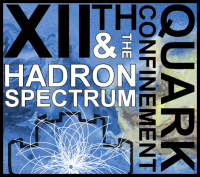Speaker
Description
The gauge field theory approach, which allows a natural way to introduce collective degrees of freedom and nonlinear topological structures based on fundamental principles of gauge symmetry is considered. This approach use description of the local geometry of proteins based on the formalism of discrete coordinates of Freney. Under this formalism, proteins are considered as one-dimensional discrete uniformity, which determined the free energy functional, defined solely by the angles of curvature and torsion. Upon rotation of the local coordinate system doublet of dynamic variables is transformed just as two-dimensional Abelian Higgs multiplet. Within this approach structure of protein backbone is defined by superposition of one-dimensional topological solitons (kinks), what allows accurate parameterise the three-dimensional structure of the protein backbone with precision up to 1A. We apply the developed approach to study of the protein phase diagram.
